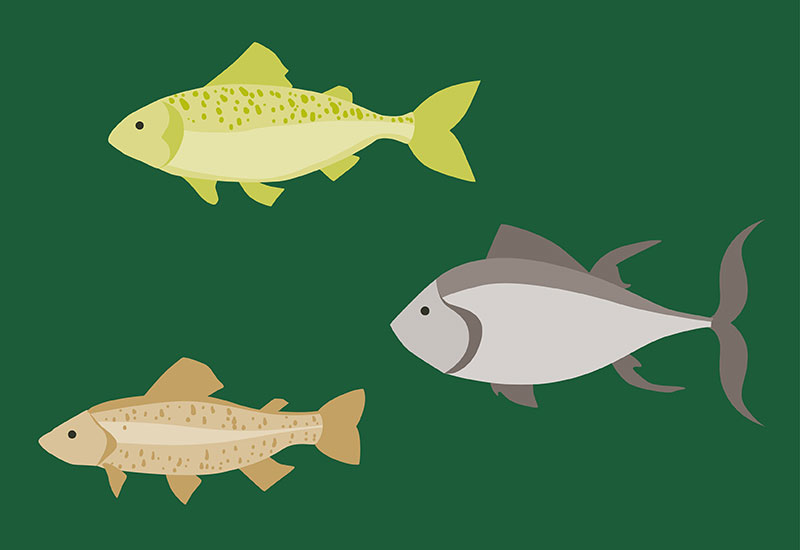The Many Benefits of Eating Seafood

The following article was written by Heinen’s Chief Dietitian, Melanie Jatsek RD, LD.
Did you know that human beings evolved on a diet rich in omega-3 fatty acids, such as wild fish and grass-fed animals? Today, due to our overwhelming reliance on processed food, we are consuming way fewer omega-3 fatty acids, while overdosing on omega-6 fatty acids.
Omega-3 vs. Omega-6 Fats
Both omega-3 and omega-6 fatty acids are considered essential fats because your body can’t make them on its own, which means you must get them through food or supplementation. Omega-3 fats—found in seafood and certain plants—have an anti-inflammatory effect on the body, while omega-6 fats tend to be pro-inflammatory.
When eaten in the form of nuts, seeds and eggs, omega-6 fats promote health. Omega-6 fatty acids are also found in cereal grains and refined vegetable oils, common ingredients in processed food. So, if you live on a steady diet of convenience food, you are unknowingly consuming way more omega-6 fats than you should.
Besides loading up on nutrient-dense superfoods, there’s another powerful step you can take to reclaim control over your health: Eat more seafood!
Seafood is a superior source of various nutrients, such as protein, amino acids, fiber, vitamins and minerals, but the real star player is omega-3 fatty acids.
Forms of Omega-3 Fatty Acids
There are three forms of omega-3 fatty acids in food:
- Alpha-linolenic acid (ALA)
- Eicosapentaenoic acid (EPA)
- Docosahexaenoic acid (DHA)
ALA
ALA is found in plant-based foods like walnuts, flax seeds, chia seeds, hemp seeds and leafy veggies. Because they can’t be fully converted into DHA and EPA, omega-3s from plants do not offer the same powerful benefits as those found in marine life. By all means, if you enjoy these plant sources of omega-3s, please continue adding them to your meals because they are in fact superfoods and will benefit your health in many ways.
EPA & DHA:
The positive effects of seafood have primarily been attributed to EPA and DHA. These omega-3 fats can potentially benefit your health in the following ways:
- Lower triglyceride levels. Triglycerides are a type of fat found in the blood. High levels are a major risk factor for heart disease.
- Raise HDL cholesterol. HDL (high-density lipoprotein) is also known as “good” cholesterol because it removes other forms of cholesterol from your bloodstream. Higher levels of HDL are linked with a lower risk of heart disease.
- Lower risks of cancer
- Lower blood pressure
- Prevent blood clots
- Improve the health of your skin
- Reduce chronic inflammation
- Promote Brain Health. DHA is a component of every cell in your body, including your brain cells! It can improve symptoms of depression, anxiety, ADHD (attention deficit hyperactivity disorder) and age-related mental decline.
- Improved insulin sensitivity and blood sugar levels
Although most fish contain some omega-3 fatty acids, these particular fatty fish contain the highest amount of EPA & DHA:
- Anchovies
- Herring
- Mackerel
- Sardines
- Salmon
- Trout
- Tuna
For positive health benefits, aim for two to three, 4 oz. servings of fatty fish per week.


